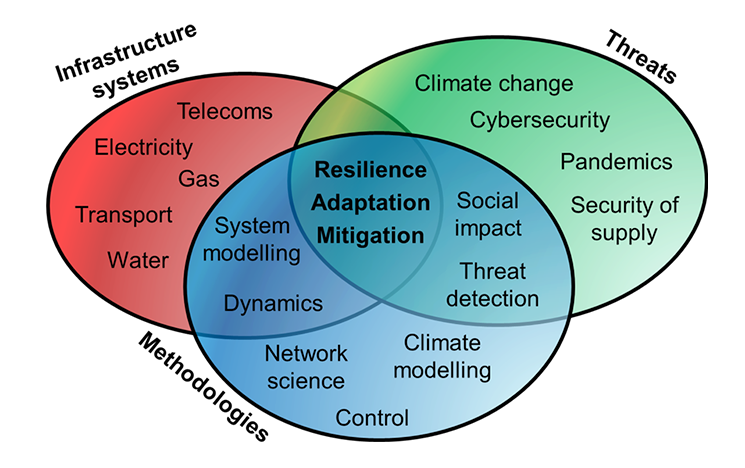Energy Efficiency and Networks
Explore our research on technologies to reduce energy losses and improve energy network operation.
Research aims
There is an urgent, global need to address the production of greenhouse gases, with binding targets for net zero CO₂ emissions by 2050.
Our research team are applying expertise in thermodynamics, fluid mechanics, computational-fluid dynamics (CFD), control systems, systems engineering and experimental techniques to reduce energy consumption.
Research areas
Find out more about our research areas:
- Low temperature power cycles
- Silent invisible urban wind energy
- Human thermal comfort in the environment
- Free-piston technologies for heating, cryogenic systems and power generation
- Two-phase expansion
- Smart Grids and renewable energy grid integration
- Energy network resilience and climate adaptation
- Critical infrastructure interdependencies
Low temperature power cycles
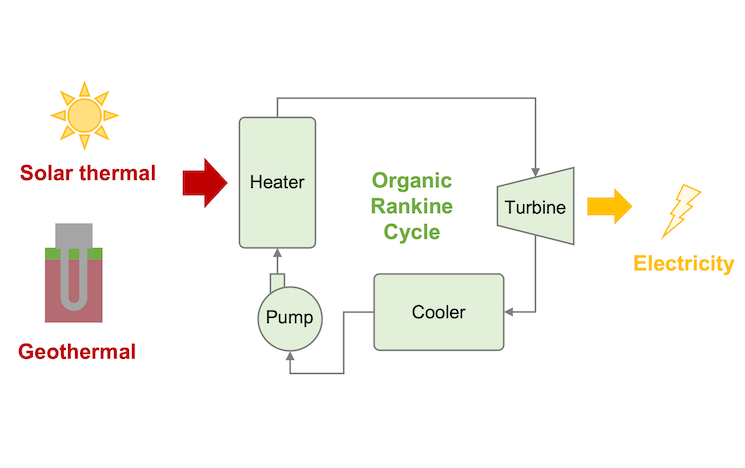
The aim is to enhance the development of power cycles that can convert low-temperature heat from the sun, underground or from industrial processes into net-zero electricity.” DR MARTIN WHITE
Senior Lecturer in Mechanical Engineering
The use of a refrigerant in place of steam in the traditional Rankine cycle enables more efficient conversion of low-temperature heat into electricity. This technology, referred to as the organic Rankine cycle (ORC), is a suitable technology for the conversion of heat from renewable sources including solar-thermal and geothermal into clean, net-zero electricity. The technology is also suitable for recovering and converting waste heat from industrial processes into electricity, thus improving energy efficiency of energy-intensive industries.
Current research within the EMERC is focused on the optimisation of these systems, with a particular focus on system and component modelling and optimisation including the design and simulation of turbomachinery. This includes the exploration of novel cycle arrangements and multi-phase turbomachinery.
Faculty lead
Silent invisible urban wind energy

Most of the world’s population lives in cities. Renewable energy is required to meet the challenges of global warming, yet wind turbines are perceived as noisy and to be eyesores. Using a special one-way-fabric it is possible to mount a wind turbine inside a building, or in a specially designed cube, removing these problems. The one-way fabric is designed to allow the turbine to work in all wind directions.
In the TFMRC a small prototype one-way-fabric cube has been tested in a wind tunnel and the working principle was established. It was found that the dynamic head of the air traveling through the baffle was double that of the wind. An axial turbine has also been manufactured using 3D printing and tested using a ventilation fan to provide airflow to drive the turbine. A speed of 900 RPM was achieved giving 50W. Potentially higher power can be expected when exposed to the natural wind. A larger cube 1m x 1m x 1m has been designed and is currently being manufactured. It has walls of perforated aluminium with a total of 16,000 10mm diameter holes each covered by a laser cut silicon rubber flap.
Faculty lead
Human thermal comfort in the environment
EMERC is developing dynamic thermal models to assess human thermal comfort in relation to the environment. This research is crucial for improving energy efficiency, occupant well-being, and sustainability in buildings. Optimal indoor conditions impact health and productivity, and our research aims to create inclusive climates for all, considering variations in responses due to age, gender, weight, and medical conditions.
We've transformed our building into a "living lab" with sensors for real-time climate data and digital models for experimenting with heating and cooling techniques. Efficient heating and cooling system management is vital in a world facing climate change and growing energy demands. Our research enables smarter heating and cooling systems, reducing energy consumption and greenhouse gas emissions.
The dynamic models have been used to develop new control algorithms for heating and cooling of living spaces (including buildings and vehicles) using model-based control algorithms that can minimise energy consumption whilst ensuring the inhabitants are comfortable.
Faculty leads
Free-piston technologies for heating, cryogenic systems and power generation
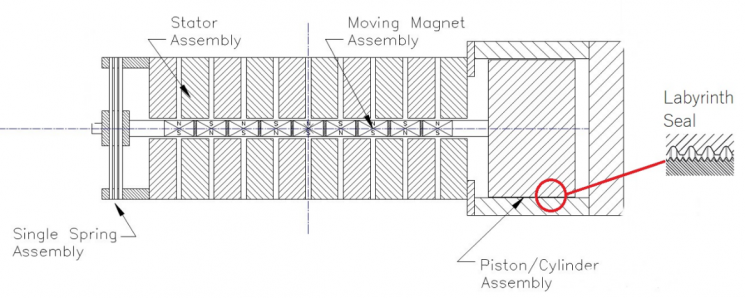
The aim is to develop novel free-piston technologies to decarbonise heating, cooling and thermal propulsion systems for net zero goal.” DR KUN LIANG
Senior Lecturer in Mechanical Engineering
Electrifying domestic heating and cooling is the way forward to achieve net zero by 2050. The key technological challenges to rapid increase in the uptake of domestic heat pumps are the sizing strategy and efficiency. The growing popularity of electric vehicles will place additional demand on the national electricity grid. There is growing demand of Stirling and J-T cryocooler for both space and quantum chips. We are developing free-piston technologies to tackle these challenges, that are scale-up of linear compressor for heat pump, linear Stirling engine CHP and high-efficiency linear compressor for Stirling and J-T cooler.
Current research is focused on a linear heat pump for low-cost and high-efficiency across the heating season. This work is based on previous development of linear compressor for refrigeration and cryocooler.
Faculty leads
Two-phase expansion
Currently, a significant amount of heat is wasted from industrial processes and rejected to the environment. The recovery of this wasted energy would help in improving energy efficiency and achieving net zero. The organic Rankine cycle (ORC) is one of the most promising technologies to convert this wasted energy into electricity. However, the technology is associated with relatively poor thermodynamic performance and high costs.
In conventional ORC systems, the turbine is designed to operate with superheated vapour. This is because the presence of liquid droplets within the turbine could cause damage or erosion. However, power generation from ORC technology could be enhanced by up to 30% if the turbine is operated with a mixture of liquid and vapour. This requires the identification of a suitable turbine that can tolerate two-phase conditions.
This project is exploring the possibility of two-phase turbomachinery for this application. This is being completed through a combination of numerical and experimental investigations of two-phase expansion processes, and system optimisation of thermodynamic systems involving two-phase expansion. The aim of this research is to confirm the feasibility of the concept, and to develop understanding of high-speed two-phase expansion processes at a fundamental level.
Smart grids and renewable energy grid integration
Distributed energy resources (DER), such as domestic renewables, batteries, or electric vehicle charging, have been the focus of extensive research into how they can be used to control and improve the operations of energy networks. Energy resource aggregation into Virtual Power Plants (VPP) is seen as a potential solution to the connection of millions of small energy resources. Our impactful research is on the leading edge of these fields, incorporating the latest developments in the energy industry, and collaborating with utility companies through industry-led initiatives such as professional organisation Working Groups (IEEE and CIGRE).
This research stream has been developed by the faculty lead since the late 2000s, and the portfolio of projects includes several collaborations with the industry in the following projects:
- “Balancing urban microgrids in future planned communities”, where we explored the prospect of using the planning flexibility offered by planned and managed communities for smart grid implementations. The results were published in a conference paper and a journal paper.
- “Redox batteries for balancing urban micro-grids”, where the specifics of the redox battery technology were considered, for supporting microgrid power balancing.
- “Agent-based controllers for electric vehicles and micro-generators” was one of earliest feasibility studies on a realistic implementations of agent-based control for DER.
- “Grid-shift and peak reduction through Distributed Storage, Smart DC and VPP models” was an early feasibility study on the possibility of domestic DC networks, and virtual power plants, as well as their benefits in load-shifting.
- “Carbon Agents for a Virtual Power Plant”, within the framework of the FP7 project DERri, was aimed at implementing a Virtual Power Plant which would co-ordinate large numbers of DER, for optimising their carbon emissions, thus minimising the carbon footprint of energy generation. An agent-based control system was developed and tested experimentally.
Interoperability between novel smart grid architectures and legacy systems is also a relevant research topic.
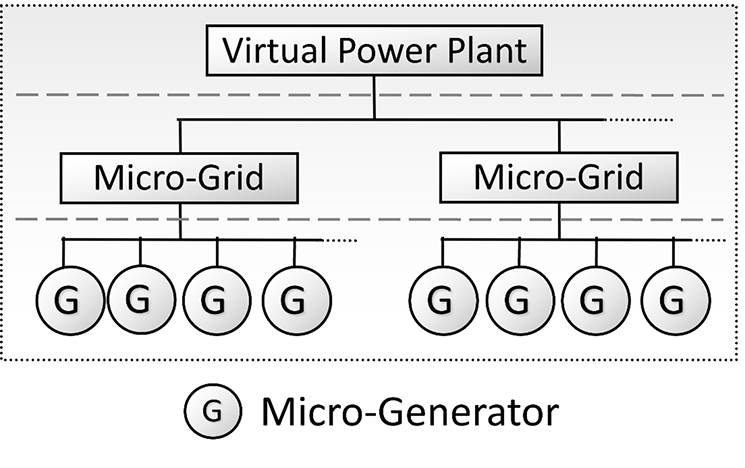
Distributed Energy Resource (DER) control hierarchy, with microgenerators being at the bottom, controlled as several groups by microgrid controllers, and all of them aggregated into a Virtual Power Plant (VPP).
Faculty lead
Energy network resilience and climate adaptation
Our research on energy networks focuses mainly on the impact of external threats on the resilience of energy networks, as well as potential mitigation measures.
One such threat is climate change, and the various hazards that are expected to become more significant. These include storms, flooding, extreme climatic conditions leading to fires, as well as other environmental hazards. Other pertinent hazards may involve cybersecurity, pandemics, geopolitical conflict and terrorism.
Resilience of energy networks is also subject to multi-factor compounding effects, such as wildfires having an impact on public health through emerging diseases and subsequently on the organisational resilience of electric utilities. Such interactions have the potential to create a self-reinforcing cycle of risk. This was considered by the CIGRE C4.47 Working Group on Power System Resilience in the context of COVID-19.
Our researchers have started investigating this crucial topic through the following activities:
- The Critical Infrastructure Resilience Network (CIReN) has been established, as an interdisciplinary network of researchers, bringing sectors together to innovate and improve national infrastructure resilience.
- CIReN’s first piece of research investigated the impact of climate change on the probability of electricity network blackouts under different scenarios.
- Through ongoing work on “Resilience metrics based on graph theory for interdependent multilayer critical infrastructure networks”, our researchers are investigating the potential use of network science as a tool for assessing power system resilience.
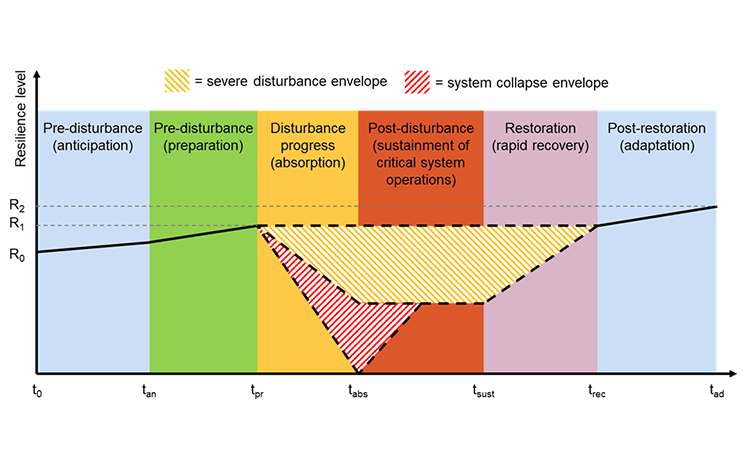
Resilience “trapezoid” encompassing the progression of energy network resilience during an impactful adverse event such as a significant storm, as defined by the CIGRE C4.47 Working Group on Power System Resilience. Customer disconnections imply a reduced resilience level.
Faculty lead
Critical infrastructure interdependencies
We explore the complex dynamics arising from interdependencies between energy, telecommunications, water, transport and other infrastructure networks.
Interdependent critical infrastructure, such as power and telecommunications networks, can be vulnerable to emerging threats like climate change, pandemics and cyber-terrorism, potentially leaving millions of people without energy, water or communications, risking lives, and costing £ billions.
This new reality challenges significantly the efficiency and practicality of the traditional in-silo, decoupled network assessment approaches.
The lack of homogeneity at interconnecting nodes across infrastructure networks can prove problematic, since key data, or even definitions and terminology, may not be comparable. In addition, the interconnecting nodes may have interactions spanning milliseconds (e.g. for power quality interference) to hours (e.g. for an outage), and which may have a variety of causes.
Learn more about our ongoing infrastructure interdependencies research stream by getting in contact with our faculty lead, and/or the Critical Infrastructure Resilience Network (CIReN).
